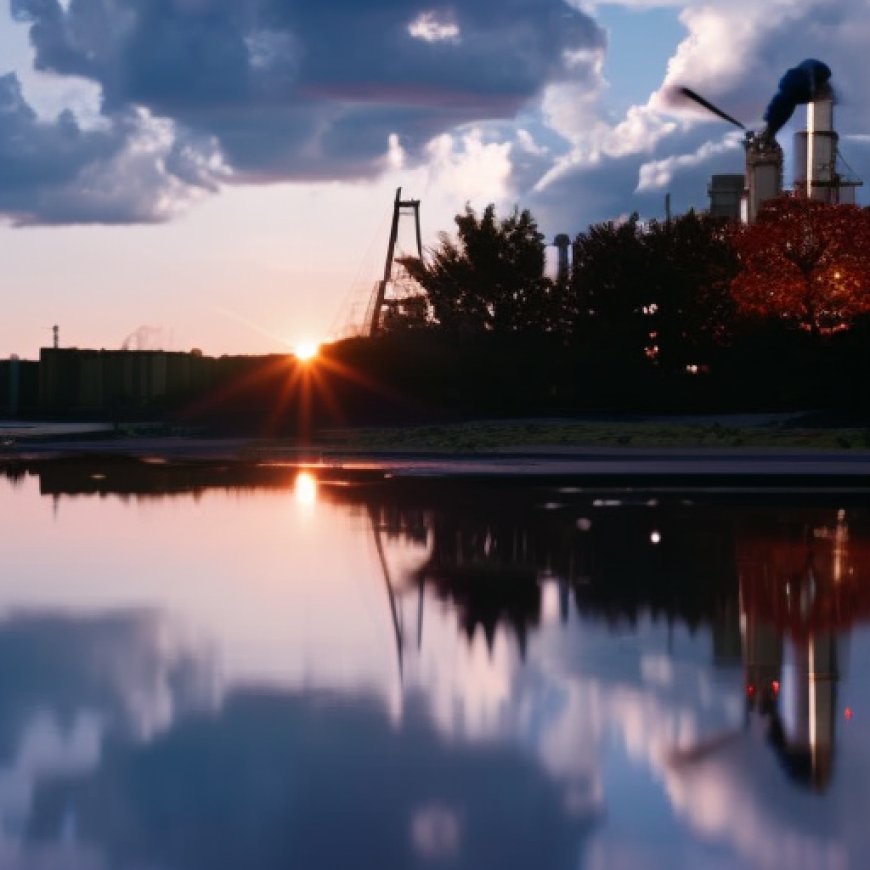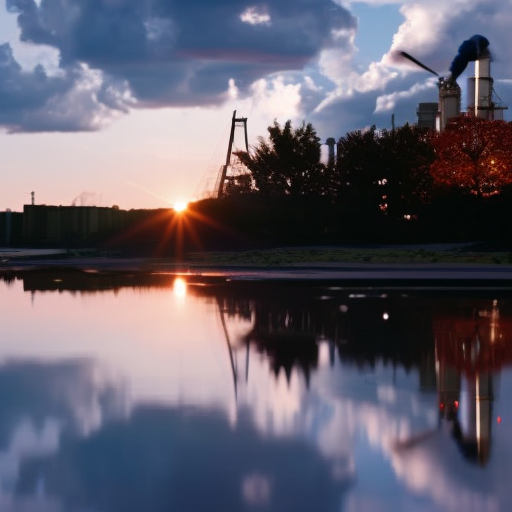Climate change is undoing decades of progress on air quality • Minnesota Reformer
Climate change is undoing decades of progress on air quality • Minnesota Reformer Minnesota Reformer


Sustainable Development Goals and Air Pollution
Introduction
A choking layer of pollution-laced fog settled over Minneapolis earlier this year, blanketing the city in its worst air quality since 2005. This incident highlights the increasing problem of air pollution caused by climate change. Climate change is making winter inversions, like the one experienced in Minneapolis, increasingly common, leading to deteriorating air quality.
Impact of Air Pollution
According to a report by First Street Foundation, one in four Americans are now exposed to unhealthy air. The increase in air pollution is considered a “climate penalty” that rolls back improvements made over four decades. The worsening air quality is not limited to specific regions; it is becoming a broader issue across the country. For example, during Canada’s boreal wildfires last summer, millions of people from Chicago to New York experienced some of the worst air pollution in the world.
Clean Air Act and Its Limitations
The Clean Air Act, passed by Congress in 1970, has successfully regulated sources of emissions and reduced pollution. However, a stricter standard is unlikely to resolve the problem. Wildfires, which contribute significantly to particulate matter pollution, are considered an “exceptional event” and exempt from regulation. This exemption challenges the effectiveness of the Clean Air Act in addressing the issue of smoke pollution.
Predictions for the Future
A study conducted by First Street estimates that by 2054, 50% more people, or 125 million in total, will experience at least one day of “red” air quality. This level of air pollution is considered risky, leading to health issues and economic losses. The predictions highlight the urgent need to address air pollution and its impacts on public health and productivity.
Inequality in Air Pollution Impacts
Air pollution affects different communities unequally. Behavioral responses to smoke, such as staying indoors or using private transportation, are strongly correlated with income. This means that individuals with fewer resources are more vulnerable to the health consequences of air pollution. Additionally, traditional sources of air pollution, like factory emissions, show a consistent relationship between socio-economic status, race, and higher pollution levels. Wildfire smoke exacerbates existing inequities and disproportionately affects low-income communities of color.
The Need for National Action
Air pollution is a political and social issue that requires national-level action. Individual and civil society efforts can only do so much. The size of the air pollution issue and its impact on public health demand greater resources and attention. Funding for cleaner air solutions remains limited, despite the alarming number of deaths caused by air pollution.
SDGs, Targets, and Indicators
1. Which SDGs are addressed or connected to the issues highlighted in the article?
- SDG 3: Good Health and Well-being
- SDG 11: Sustainable Cities and Communities
- SDG 13: Climate Action
- SDG 15: Life on Land
2. What specific targets under those SDGs can be identified based on the article’s content?
- SDG 3.9: By 2030, substantially reduce the number of deaths and illnesses from hazardous chemicals and air, water, and soil pollution and contamination.
- SDG 11.6: By 2030, reduce the adverse per capita environmental impact of cities, including by paying special attention to air quality and municipal and other waste management.
- SDG 13.1: Strengthen resilience and adaptive capacity to climate-related hazards and natural disasters in all countries.
- SDG 15.1: By 2020, ensure the conservation, restoration, and sustainable use of terrestrial and inland freshwater ecosystems and their services, in particular forests, wetlands, mountains, and drylands, in line with obligations under international agreements.
3. Are there any indicators mentioned or implied in the article that can be used to measure progress towards the identified targets?
- Indicator for SDG 3.9: Number of deaths and illnesses attributed to air pollution (not explicitly mentioned in the article, but the focus on air pollution and its health impacts implies this indicator).
- Indicator for SDG 11.6: Air quality index and levels of particulate matter (PM2.5) in cities.
- Indicator for SDG 13.1: Frequency and intensity of temperature inversions and their impact on air quality.
- Indicator for SDG 15.1: Extent of forest fires and their contribution to air pollution.
Table: SDGs, Targets, and Indicators
| SDGs | Targets | Indicators |
|---|---|---|
| SDG 3: Good Health and Well-being | Target 3.9: By 2030, substantially reduce the number of deaths and illnesses from hazardous chemicals and air, water, and soil pollution and contamination. | Number of deaths and illnesses attributed to air pollution |
| SDG 11: Sustainable Cities and Communities | Target 11.6: By 2030, reduce the adverse per capita environmental impact of cities, including by paying special attention to air quality and municipal and other waste management. | Air quality index and levels of particulate matter (PM2.5) in cities |
| SDG 13: Climate Action | Target 13.1: Strengthen resilience and adaptive capacity to climate-related hazards and natural disasters in all countries. | Frequency and intensity of temperature inversions and their impact on air quality |
| SDG 15: Life on Land | Target 15.1: By 2020, ensure the conservation, restoration, and sustainable use of terrestrial and inland freshwater ecosystems and their services, in particular forests, wetlands, mountains, and drylands, in line with obligations under international agreements. | Extent of forest fires and their contribution to air pollution |
Behold! This splendid article springs forth from the wellspring of knowledge, shaped by a wondrous proprietary AI technology that delved into a vast ocean of data, illuminating the path towards the Sustainable Development Goals. Remember that all rights are reserved by SDG Investors LLC, empowering us to champion progress together.
Source: minnesotareformer.com

Join us, as fellow seekers of change, on a transformative journey at https://sdgtalks.ai/welcome, where you can become a member and actively contribute to shaping a brighter future.







